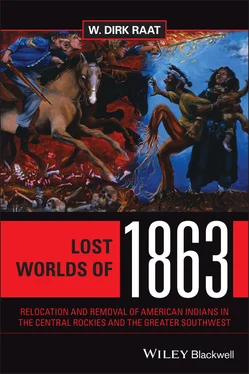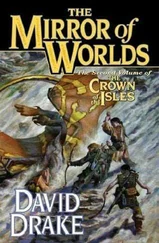A Brief Word about Organization and Usage
With the exception of the Prologue, the subject matter is organized around several case studies in which the narrative is developed from early historical times through the late nineteenth and early twentieth centuries. Following the Prologue, the first chapter focuses on the topic of Indian slavery and Lincoln’s Emancipation Proclamation of 1863. The subject of Indian slavery is not simply a digression, but part of the argument that the so-called “Great Emancipator” paid no heed to the problem of “de facto” Indian slavery and as such one more reminder of his lack of empathy for the Indian people. This chapter introduces the reader to the general environment of the Civil War era in which Lincoln’s lack of an Indian policy led to the precedents of relocating Indian people from Minnesota to the Missouri country, and depended upon the military to enforce the removal plans. Preoccupied with restoring the Union, Lincoln did little to control the western volunteers’ anti-Indian zeal. His main concern was to create treaties so that land could be acquired by and for the advancing white frontier. After the Minnesota relocation the Numa or Paiutes were removed from the Owens Valley, the Navajo from Arizona, and the Mescalero relocated to Bosque Redondo. The massacres at Bear River and Sand Creek were the unintended results of a policy designed to wrestle land and resources from the Indian people.
After the Lincoln introduction, the following chapters treat of the Owens and Northern Paiute, the Great Basin Shoshones, Southern Paiutes, and Colorado Utes, the Navajo, Apache, Yavapai, and O’odham, and finally the Northwestern Shoshone and Yaqui experiences. I have included four shorter sub-chapters or mini-chapters after some of the chapters. These were originally to be called cross-bars but they went too long. Called “commentaries,” all treat of a theme presented in the previous chapter, while the commentary on “Mormons and Lamanites” reflects themes found in several chapters.
These case studies and “commentaries” are not all-inclusive, and do not detail the numerous examples of indigenous groups in the Greater Southwest, such as the Cheyenne and Arapaho of Colorado, various Pueblo groups in New Mexico, the western Comanche, or a variety of California Indians, and others.
The chapter on the Bear River Massacre could easily been included in Part One since Cache Valley, Utah and Preston, Idaho would fit the geographical description of “the Far West.” So too could the chapter on the Yaqui deportation be included in Part Two under “The Arizona and New Mexico–Sonoran Experience.” They were placed in a separate section under Part Three because of the extent of the violence that was associated with each event. And because the Sand Creek Massacre of 1864 is generally well known to most readers, it does not receive special attention here. It was, in fact, partly the result of a precursor event less well known as the Bear River Massacre of 1863.
In the Prologue I develop an overview, including a global dimension, on the phenomenon of relocation and removal. The Epilogue not only summarizes the content, explaining the major examples of relocation and removal, but also several sub-themes as well. It also has something to say about current and future happenings, especially on the topic of survival. Since, apart from the introductory material, the subject matter is organized spatially around individual case studies, the reader is cautioned about seeking a chronological narrative. Instead, the reader is encouraged to seek out those case studies of interest and read them as separate episodes. The Prologue and Epilogue attempt to develop the interrelationships and similarities between the various chapters and provide some unity.
Another forewarning, each case study has an extensive history of the pre-contact, Spanish, and Mexican worlds that created the context for the events of 1863. My focus on ceremonial rites and Indian belief systems was developed so as to illustrate the relationship between sacred landscapes and personal identity. Relocation not only removed the people from the land, but the land from the people and by so doing robbed these people of their identity.
As for usage, the common misunderstanding of today’s non-Indian community is that these indigenous peoples prefer to be called Native American rather than American Indian. In an informal 2005 survey conducted by Wendy Weston, Navajo, Director of American Indian Relations at the Heard Museum, of several indigenous peoples, when asked: “As a Native person, what term do you prefer to be identified by?,” most respondents preferred to be identified as American Indian and/or their specific tribal affiliation. As the respondents said, “Native” or “Native American” is a term “which anyone born in the US has the right to be called.” 3Although, as cultural theorist Gerald Vizenor reminds us, while “Indian” is an invented name that does not come from any native language, “Native American” at least distinguishes native inhabitants in the Americas from the people of India. 4
As for other options, “indigenous” might be confused with an indigent state of poverty. Referring to Hopi and Zuni ancestors, this writer has trouble saying “Ancient Pueblo” in lieu of Anasazi, since the word “Pueblo” is Spanish and not Indian, and it substitutes a perfectly good Navajo word for “old enemy” and replaces it with an idea of questionable ancestry. Some words, like “Tarahumara” and “Rarámuri” are derived from the same word “Talahumali,” and are used interchangeably.
Because of these problems I have contented myself by using most words in place of each other. All of the words require qualifications, and no one term can be used in any and all occasions. Be prepared to read about indigenous peoples, Spanish terms like Navajo, or Navajo tribal terms like Diné, translations of terminology like “The People” or “Two Village People,” Natives, North American Indians, Amerinds, First Nations, Native Americans, indios , and just simply Indians. No one said it was going to be easy.
As for spelling, I have preferred to spell “Shoshone” with an “e,” not an “i” (Shoshoni), although several sources spell it “Shoshoni.” Again, I spell “Paiute” with an “a,” although some writers prefer “Piute.”
The word “settler” usually refers to whites. However, it should be remembered that often times the Indian was the settler who was confronted by unsettled invaders. This was true in the early times when Hernando Cortés and his Indian allies conquered Tenochtitlán, an Aztec city of 250,000 to 300,000 urbanites, as well as in the nineteenth century when Mormons encroached upon the Northwestern Shoshone settlers of the Cache Valley of Northern Utah.
The word “slavery” can cause consternation in some quarters. Although I use the term throughout the book, it might be more accurate to speak of “de facto slavery,” a form of bondage that whatever it is called is in fact “slavery.” The word implies the ownership of a person or persons by another or others. That ownership comes from outright purchase or exchange of goods for a person, or acquisition of another through kidnapping or violence. Synonyms include “servitude,” “bondage,” and “indenture,” while slaves were often called “servants” or “peons.” Historian Andrés Reséndez, in his book on Indian enslavement in the Americas calls this type of “de facto slavery,” which is a form of bondage and involuntary servitude, The Other Slavery .
Whatever the arrangement is called, “de facto slavery” was a form of coercion that was often accompanied by sexual and economic exploitation of the enslaved person. The brutal actions of enslaving were often an adjunct to violence in the form of warfare, rape, homicide, massacre, mutilation and removal or deportation.
Читать дальше












